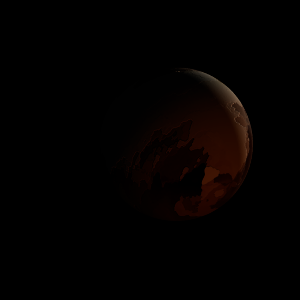|
|
Space Astro
|
Info for exoplanet "Lypga"
| Scientific (actual) data |
|---|
| Planet | HD 20794 d |
| Planet status | Confirmed |
| Mass sini | 0.01108 |
| Orbital period | 88.9 |
| Semi major axis | 0.364 |
| Orbit eccentricity | 0.25 |
| Angular distance | 0.057739 |
| Discovered | 2011 |
| Updated | 2022-05-13 |
| Omega | 252 |
| K | 0.57 |
| Publication | Published in a refereed paper |
| Detection type | Radial Velocity |
| Mass detection type | Radial Velocity |
| Alternate names | 82 Eri d, e Eri d |
| Star name | HD 20794 |
| Right ascension | 49.98° |
| Declination | -43.07° |
| Mag v | 4.26 |
| Star distance | 6.06 |
| Star metallicity | -0.38 |
| Star mass | 0.813 |
| Star radius | 0.9 |
| Star sp type | G8V |
| Star age | 14 |
| Star temperature | 5490 |
| Star detected disc | IR Excess |
| Wikipedia article | HD 20794 d |
Back
| |
| Fictional info (?) |
|---|
| Suggested name | Lypga |
| Planet type | Cold planet |
| In English, Lypga is often referred to as the "brown planet" because the methane prevalent on its surface gives it a strange brown appearance that is distinctive among the astronomical bodies visible to the naked eye.
It is named after the deity Lypga, the demon of good fortune.
Lypga is shrouded by an opaque layer of highly reflective clouds of sulfuric acid, preventing its surface from being seen from space in visible light.
Lypga is primarily composed of carbon dioxide with a significant part of its mass being methane, though methane comprises only about a tiny fraction of the number of molecules. It may also have a rocky core of heavier elements, but like the other cold planets, Lypga lacks a well-defined magnetic field.
In late February 2700, Lypga was visited by the New Horizons probe, which used Lypga's gravity to increase its speed and bend its trajectory en route to Rokme Gabest. Future targets for exploration in the Lypga system include the probable ice-covered liquid ocean of its moon Merehar.
Surface often full of large primitive plants that survive while eating another species called Aechothe Thy if they can. The Pidtosyco-ke are closely related to Steculo'gete and have scales and vary in size from 40 to 100 cm. The Pidtosyco-ke are known to withstand temperatures from 80 to 120°C and high atmospheric pressure which is common on Lypga. |
| Estimated population | 24000000000 |
| Atmosphere | Carbon dioxide | 72% |
| Methane | 18% |
| Water | 9.5% |
| Oxygen | 0.0033% |
| Atmospheric pressure | 70 bar |
 |
| Moon | Clicuauto-tiprax | Medium-sized round rocky comet |
| Nesome The | Small round ice comet |
| Merehar | Very small round oceanic moon |
| Google search for Lypga |
|
Website by Joachim Michaelis
|
|
|
|